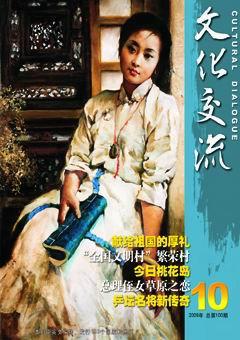The Former Residence of the Mad Monk
By Zhou Rongchu


Ji Gong (the Mad Monk or Lord the Helper) is a famous legend in Chinese culture. Unlike many legendary figures in folklores, this mad monk was a real person, though he is said to have been an Arhat who tamed dragons in the heaven and came to this world to help the people in need.
Before he became a Buddhist monk, his name in this secular world was Li Xiuyuan (1148-1209) living in the Southern Song Dynasty (1127-1279). His ancestors were some high-ranking generals and a great grandmother was a princess. When it came to the generation of his grandfather, the family went down in the world. It moved to the Tiantai Mountain in Eastern Zhejiang. Li Xiuyuan was born when his father was in his forties.
He grew up to be a scholar with profound knowledge of Buddhism. This was probably most inevitable, for the village where he was born and grew up was close to Tiantai, a prominent sanctuary of Buddhism. Before he was to marry the daughter of his maternal uncle, he beseeched the abbot of a nearby temple to accept him as a monk. He was accepted. His maternal uncle often came to the temple, trying to persuade Li Xiuyuan to change his mind. In order to avoid such interference, the young monk escaped to Hangzhou with the blessing and arrangements of his master, thus started the legend of the Mad Monk.
According to the folklore, the young monk at the Lingyin Temple was by no means a regular Buddhist who applied Buddhist commandments to himself. He overslept; he ate dog meat; he wandered through downtown Hangzhou; he did not attend regular lectures and studied sutras; he was seen composing poems and singing songs aloud in the public. As folklores go, the monk behaved madly because he had mysteriously acquired a profound understanding of Buddhism; there was no need for him to follow the conventional way to Buddhism; and helping people was the highest form of practicing Buddhism. He did help a lot of people. As a doctor who worked wonders, he saved a lot of lives and cured many impossible diseases. When the pressure on him to behave himself and observe all the rules and regulations became unbearable at Lingyin Temple, he escaped again. This time he came to Jingci Temple on the other side of the West Lake.
His legend followed him and continued to grow. A story relates that he magically transported timber through an ancient well to help build the temple. When he was told there had been enough, he shouted stop. The next timber stopped immediately. It was half way up the well. The well is in the compound of Jingci Temple today.
The Mad Monk died in 1209. His stories grew and spread. A former residence of the Mad Monk was erected in 1927 in the northern part of the county capital of Tiantai on the previous site of a Buddhist temple named after him. From the first day onward, the former residence became a huge attraction.
Today, the Mad Monk enjoys a huge reputation both at home and overseas. In Taiwan, the Mad Monk is one of the three Chinese demigods widely admired (the other two are Lord Guan for his loyalty and military prowess and Lord Bao, a judge who punished the bad and brought justice to people). There are hundreds of temples in Taiwan in honor of Lord the Helper. Longyin Temple in Jiayi, Taiwan is one of the most popular Mad Monk temples in the island province, for it is said that, since 1966, some prayers made there have been answered.
Lord the Helper is regarded as a man of charity in China. Lin Dong, director of a charity organization in Macao, has followed the example of Lord the Helper. He has raised 30 million yuan and helped build more than 30 schools on the mainland. He was honored as one of Chinas top ten philanthropists in 2007. Mr. Cai Zhuoming, a business tycoon in Thailand, donated a 2.8-meter-tall jade statue of Lord the Helper to the former residence of the Mad Monk in Tiantai. Scholars from Japan, France, Singapore and America have visited the home of the Mad Monk.
2009 marks the 800th anniversary of the demise of the big-hearted monk. Celebrations are held in Tiantai throughout the year to honor the monk who helped the people in need.□

